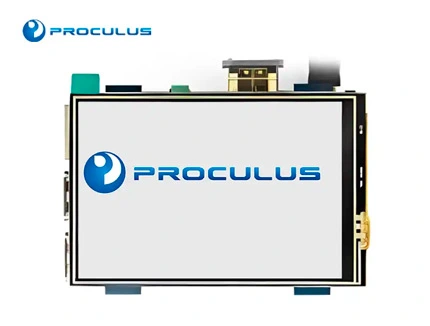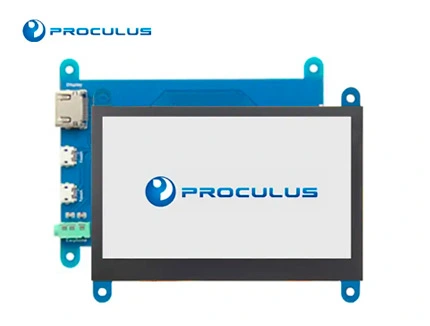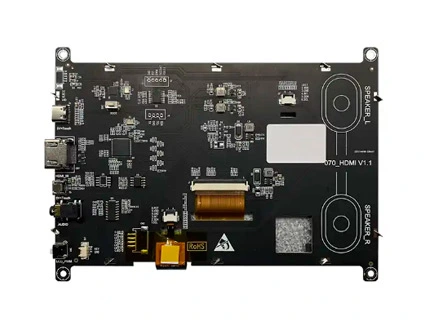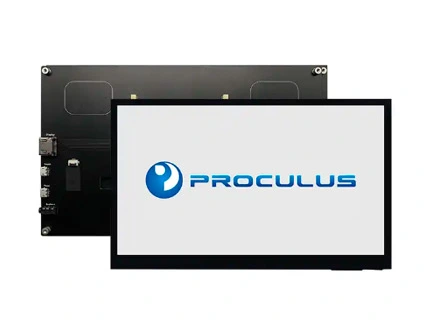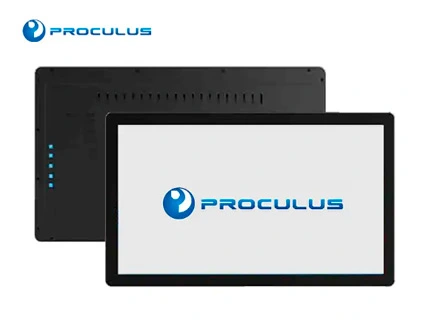
Display HDMI
Discover a new way of interface for your equipment! Choose an industrial quality touch monitor for your application.
What is an HDMI Display?

Compatible with Raspberry Pi, mini PCs, and systems running Windows, Linux, Android, or macOS, these displays deliver sharp visuals and low-latency response for both consumer and industrial use.
Whether you’re building a custom interface or enhancing a professional setup, HDMI LCD panels offer flexibility and precision for demanding environments.
Quality HDMI Displays solutions
Proculus HDMI displays are built for developers and integrators who value clarity, durability, and precision. From 3.5-inch to 21.5-inch HDMI touch screen displays, each unit uses industrial-grade components for stable signal, accurate color, and long-term reliability—ideal for embedded systems and interactive terminals.
Whether for a touchscreen display HDMI solution or a standard HDMI LCD panel, our lineup delivers the perfect balance of performance, flexibility, and visual quality for professional use.
Main Questions About HDMI Displays
Where to use HDMI screens?
An HDMI display delivers both audio and video through a single digital connection, offering better performance than older standards like VGA.
It’s designed to provide sharp visuals, clear sound, and low signal interference. In practice, that means cleaner setups and better results—especially in professional environments where reliability matters..
What is the purpose of an HDMI display?
You’ll find HDMI screens in home theaters, gaming systems, conference rooms, laptops, and even embedded devices. In each case, the benefit is the same: a stable connection that guarantees quality image and sound.
For example, a 10.1″ HDMI touch screen display is a popular choice for interactive booking panels or automation dashboards.
How to choose the ideal HDMI display screen?
Choosing the right HDMI LCD display depends on your application. Need a responsive interface for an interactive terminal? Go with a touchscreen display HDMI model. Just need a visual output? A standard HDMI LCD panel may be enough.
Check the resolution, size, compatibility with your OS (Windows, Raspberry Pi, Linux), and whether industrial-grade durability is a must for your setup.
How to connect HDMI to the screen?
Start by selecting a high-quality HDMI cable that fits your device.
1. Plug one end into your source (like a PC or Raspberry Pi);
2. Connect the other end to the HDMI display screen;
3. Turn on both devices and select the right input.
If there’s no signal, we recommend checking the resolution settings and verifying that the display supports the device’s output format. It’s a quick fix most of the time.
What is the advantage of using HDMI displays?
Besides simplifying cable management, HDMI LCD displays offer full digital transmission, which means zero signal loss and cleaner audio/video output.
They support a wide range of resolutions and formats, making them future-proof and widely compatible. That’s exactly why HDMI touch screen displays have become the go-to in everything from embedded systems to pro AV setups.
 English
English